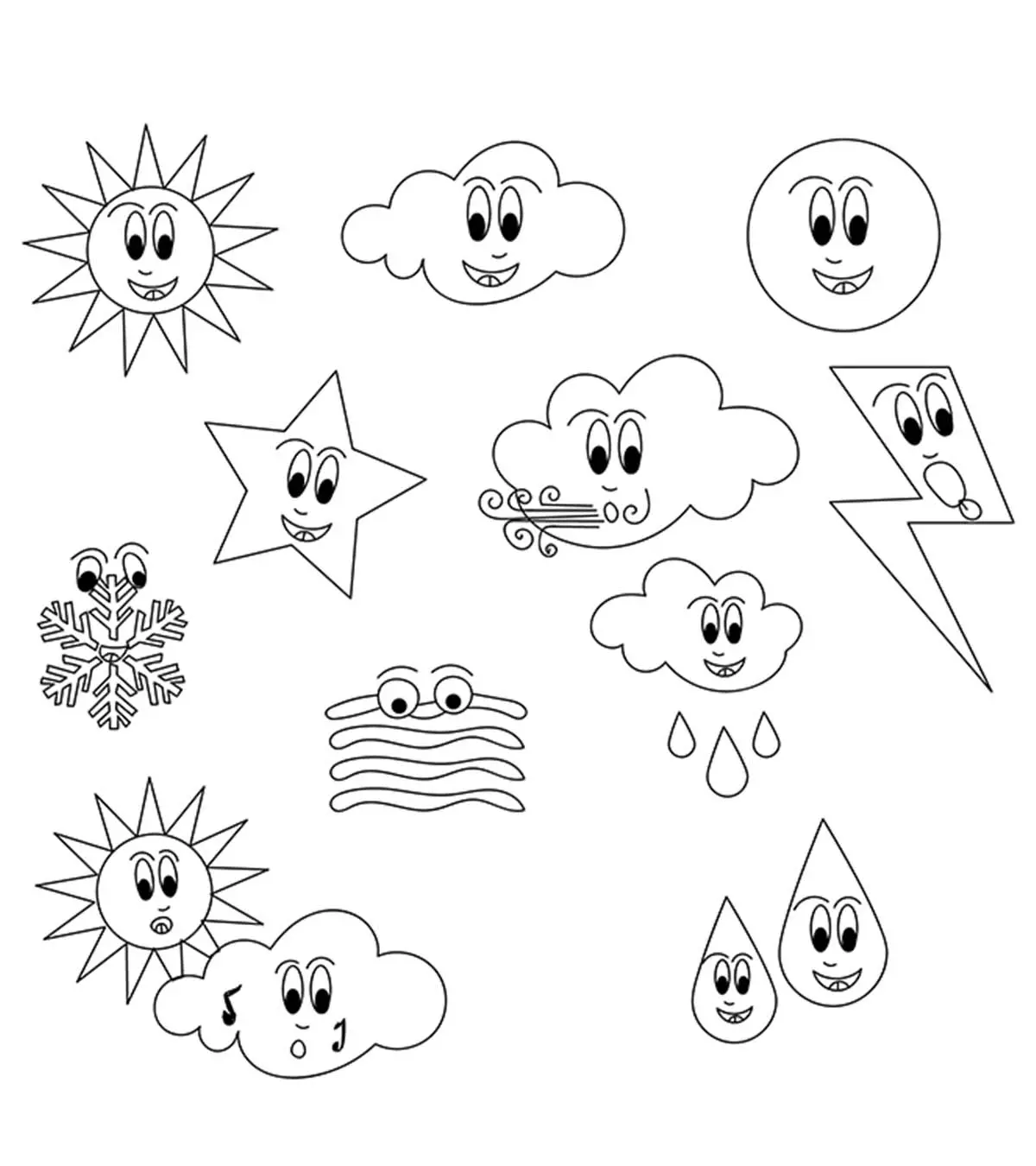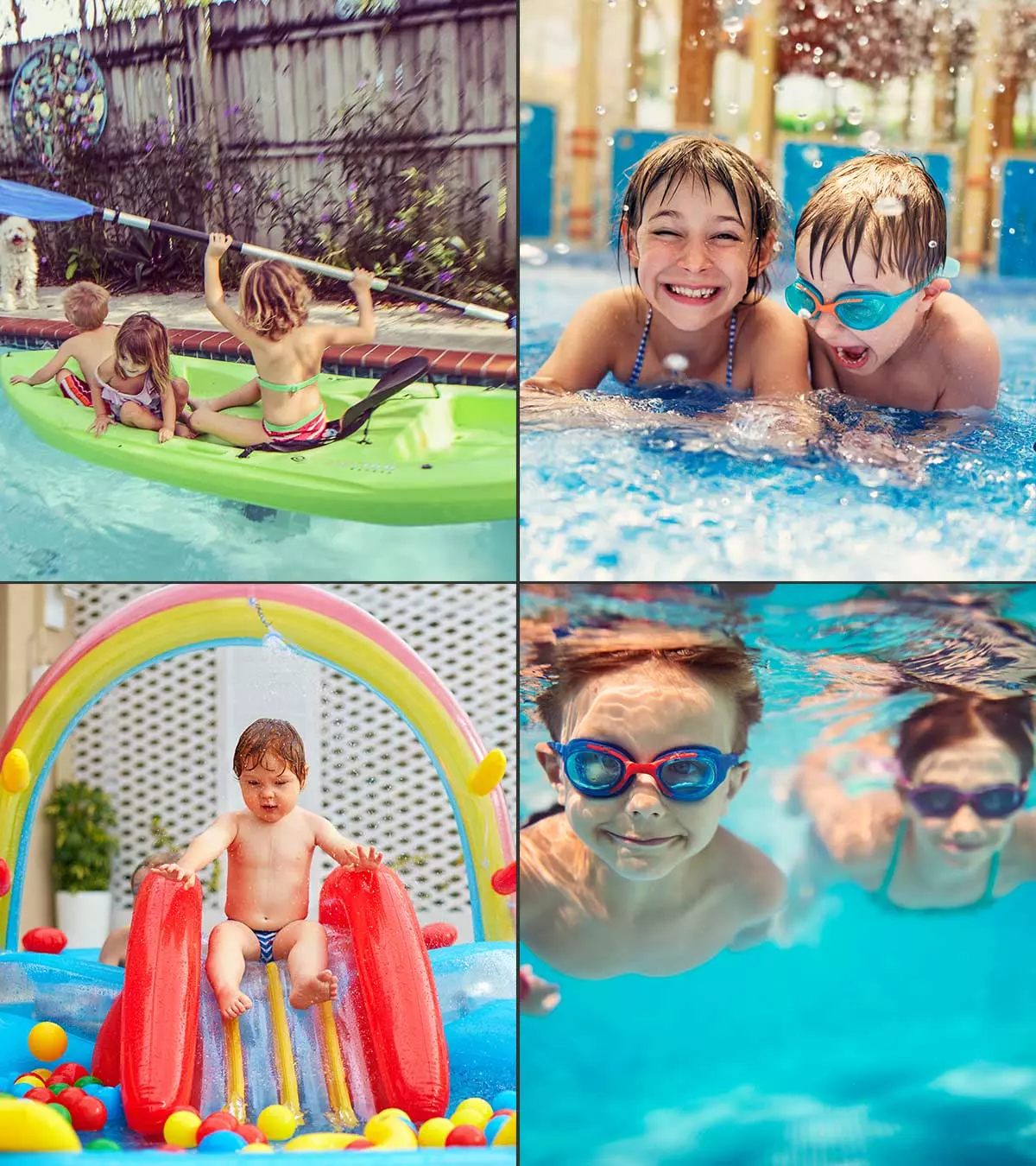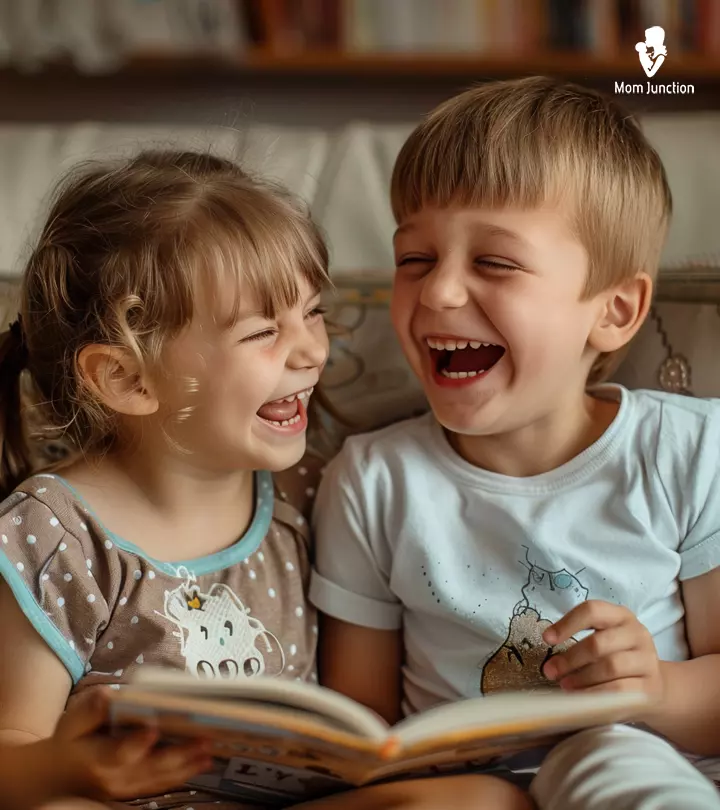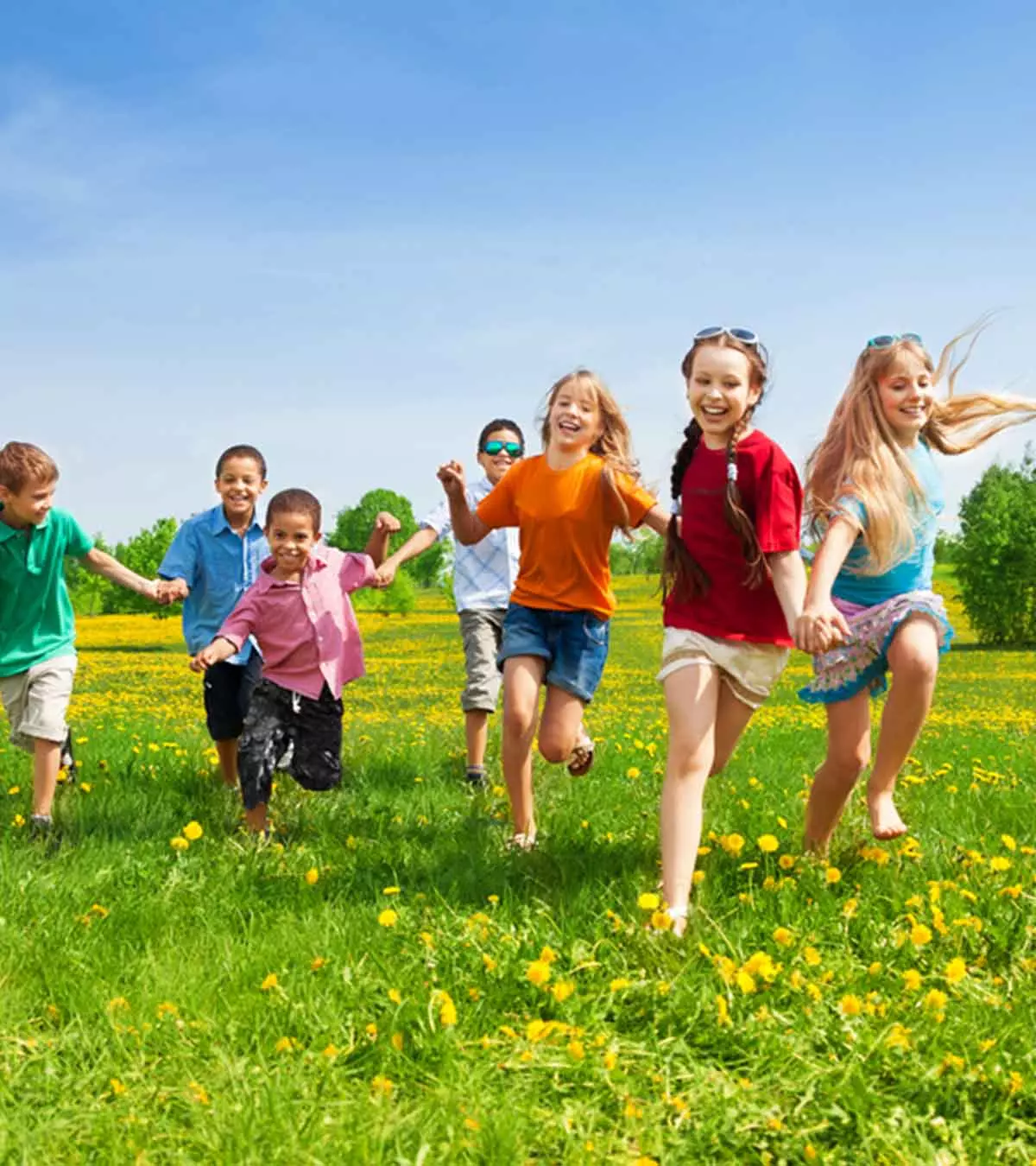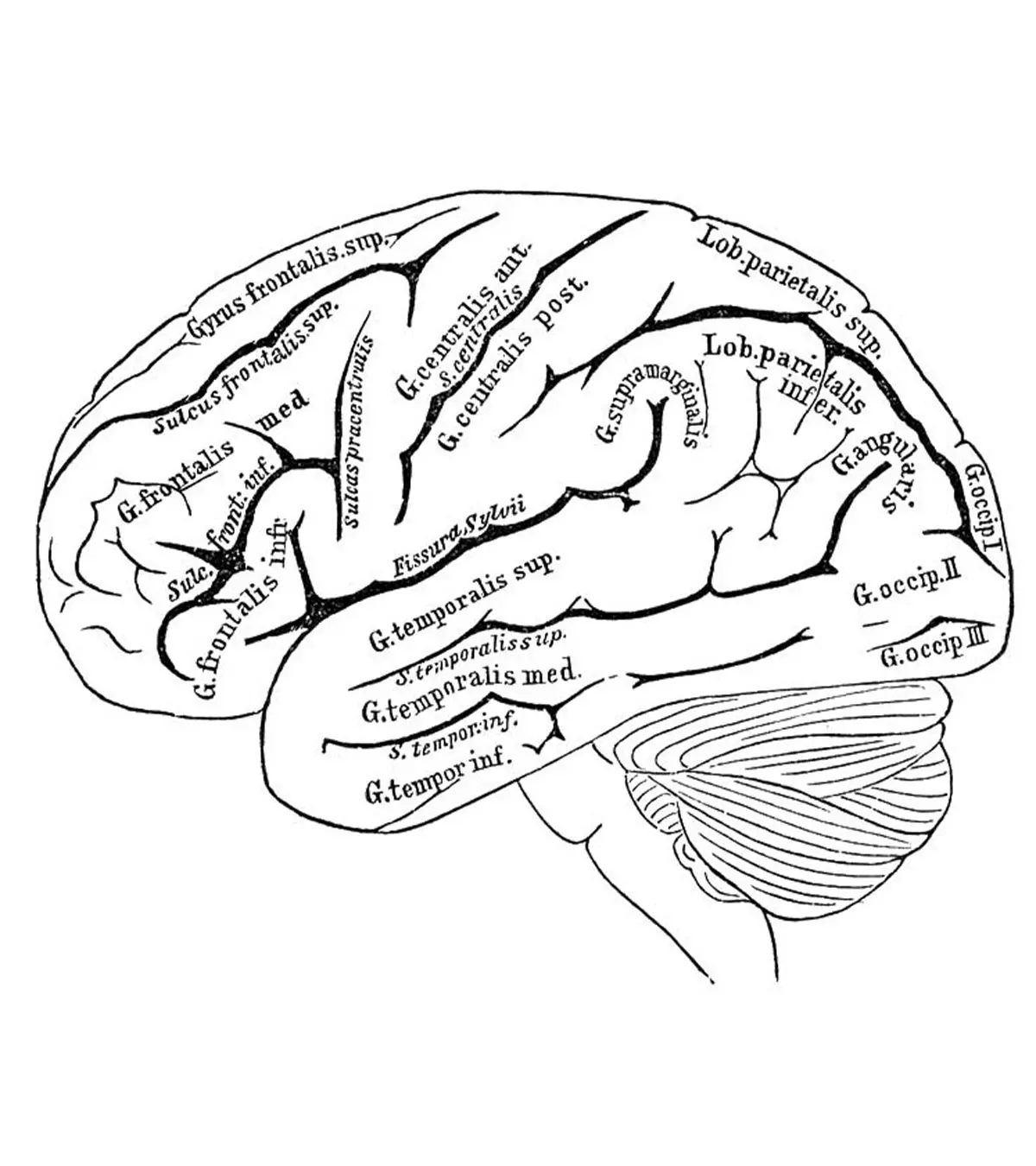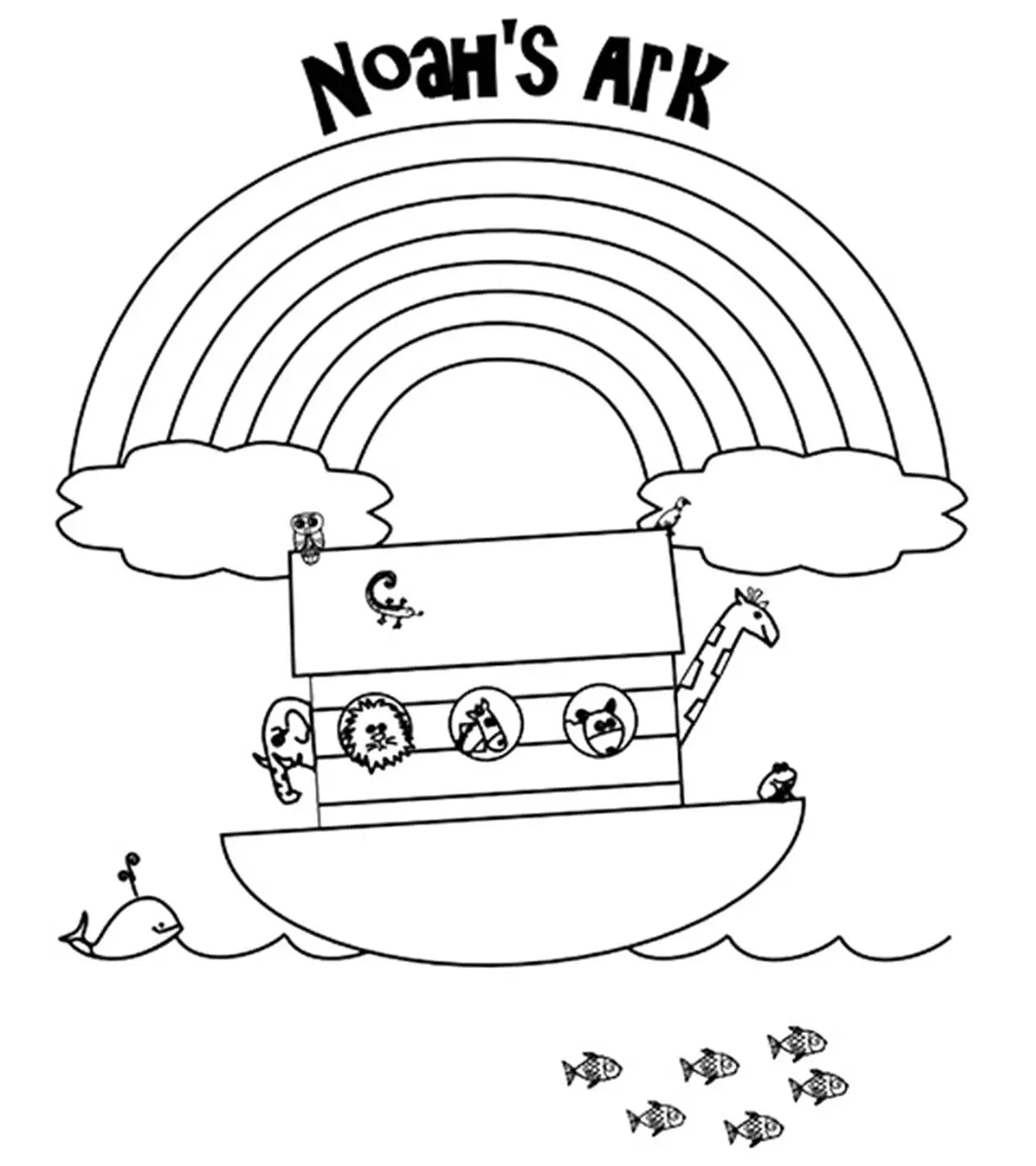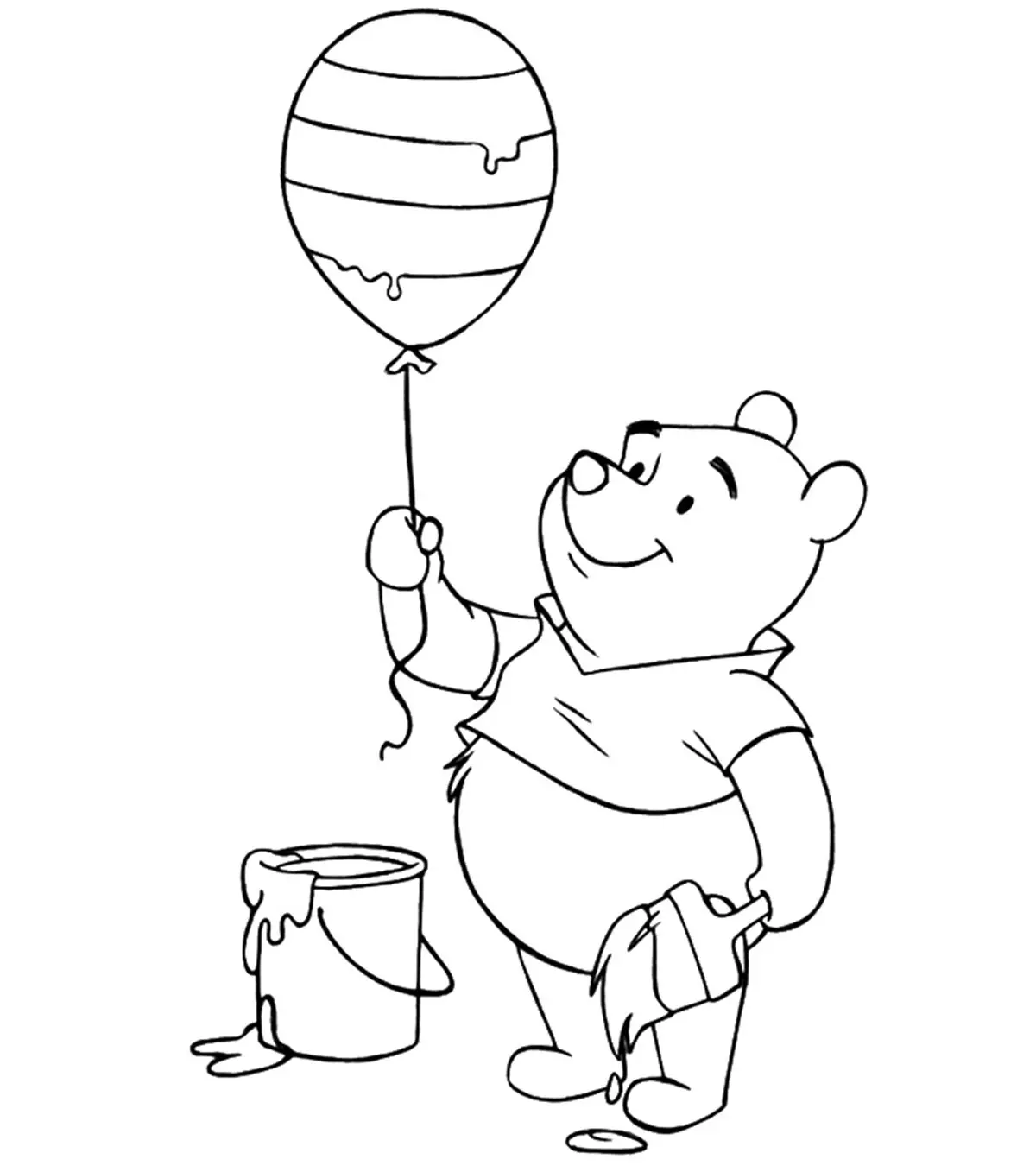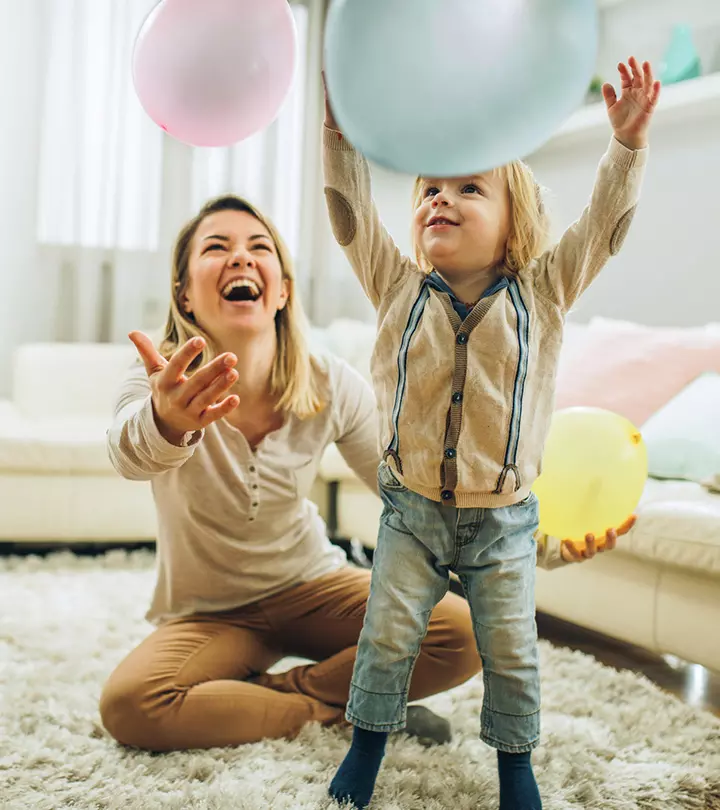
Image: Shutterstock
Practicing mindfulness is important to be aware of the present and the surroundings. This post on mindfulness activities for kids will help you teach this important skill to your little ones. Mindfulness lets you live in the present without worrying about the future. This also helps in focusing on whatever work you are doing in a better way. There are several benefits of practicing mindfulness from a young age. And this process can be made interesting for kids as well. So, delve into this post for some engaging mindfulness activities that your kid will enjoy.
Key Pointers
- Mindfulness can improve self-control, critical thinking, and communication, reduce anxiety, and boost positivity.
- Breathing exercises, walking, or yoga can help children destress and remain calm.
- Some mindfulness activities that can help children focus on their other senses include bell exercises, breathing companion, sense of smell, and reading heartbeat.
- Positive mission statements, embracing all feelings, practicing gratitude, and creating a mind jar are some activities that can help children comprehend their emotions.
- Some fun mindfulness games for kids are blind man, blindfold taste test, Jenga, and identifying the correct penny.
Benefits Of Mindfulness For Kids
Mindfulness seems like a complex practice that is meant for adults. Are kids too young to understand or benefit from that? No, mindfulness is a simple practice for everyone and can be practiced by children as well.
- Self-control: A mindful person has better self-control on their body and mind. Thus, mindfulness strengthens self-control.
- Lowers anxiety: In this fast-paced life, kids experience a lot of stress, be it academic pressure, peer pressure, or lack of physical activity. Mindfulness involves many calming and relaxation exercises for the body and mind, making it one of the best anxiety activities for kids.
- Boosts positivism: A healthy mind lives in a healthy body. Mindfulness aids in making a person more positive and wards off negative vibes to an extent.
- Improves critical thinking: Mindfulness activities work on developing thinking and analytical skills. Thus, it helps in better decision making by the progress made in critical thinking.
- Better communication: Mindfulness helps in improving social skills, and also brings clarity in communication.
- Improves body image: Studies have shown that practicing mindfulness can help in improving the overall well-being of an individual, when they are non-judgmentally focusing in the present moment, thus promoting a positive body image (1).
These benefits are precisely why children should be encouraged to practice mindfulness early on.
17 Fun Mindfulness Activities For Children
Here are some fun and engaging mindfulness activities for kids to practice and benefit from.
1. Breathing exercise
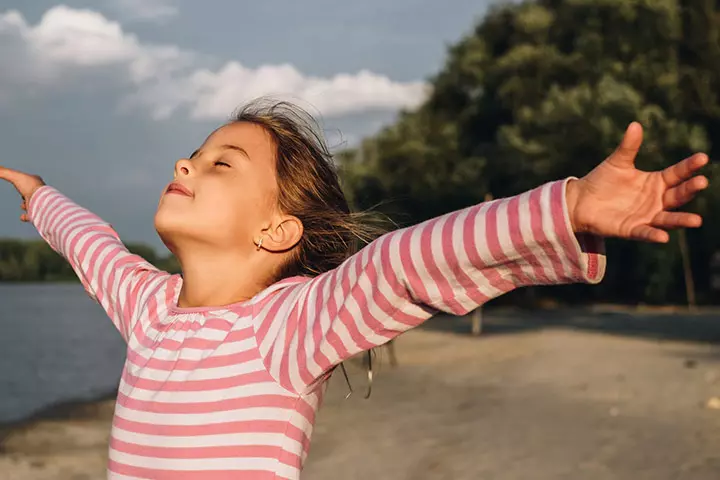
Breathing exercises help in relaxing and training the mind to be calm and balanced, regardless of the circumstances.
How to:
- Get the child to sit in a calm environment, in a comfortable position.
- Ask the child to breathe normally and to observe their breath.
- After a couple of minutes, ask them to take a deep breath and once again observe the inhaling and exhaling procedure.
- Repeat this activity at least 5 to 10 times every day.
Caitlin Houston, a mother of three and a blogger, shares the advantages of teaching the square breathing technique to children. She says, “Square breathing, or box breathing, is a technique used to relieve stress. My daughters and I practice square breathing when we are upset, angry, or nervous. This is how to square breath: Inhale slowly to a count of four, hold your lungs full for four seconds, exhale at the same pace, and hold air out of your lungs for a count of four. Repeat (i).”
2. Take a walk in nature

A walk in a natural setting such as a forest or a park makes one more aware and vigilant of their surroundings. Mindfulness activities like hiking or gardening in the backyard, are about making oneself more attentive, and this activity will help you achieve just that.
How to:
- Choose a garden, trek, or any outdoor area with greenery.
- Stock up on healthy snacks and water to stay hydrated.
- Let the child walk around in a relaxed manner while observing everything they find on their trail and listening to the sounds of the birds, the wind, and the stream if there is one.
- This mindful walk will awaken all their senses and connect them with nature.
3. Bell exercise

This fun exercise will make the child relate to the present moment and enhance their auditory senses. This can be an individual activity or a group activity. You will need a medium or large-sized bell and a noise-free room.
How to:
- Make the child sit in a quiet place. If it is a group of children, ask them to sit in a circle.
- Now ring a bell and ask the kids to pay attention to the sound of the bell, and the vibrations it generates.
- Ask them to remain silent, and when they stop hearing the sound of the bell, ask them to raise their hand.
- Let them stay silent for a minute more to pay attention to the other sounds they can hear around them.
- Finally, ask the children to describe their hearing experiences before and after the bell was rung.
4. Breathing companion
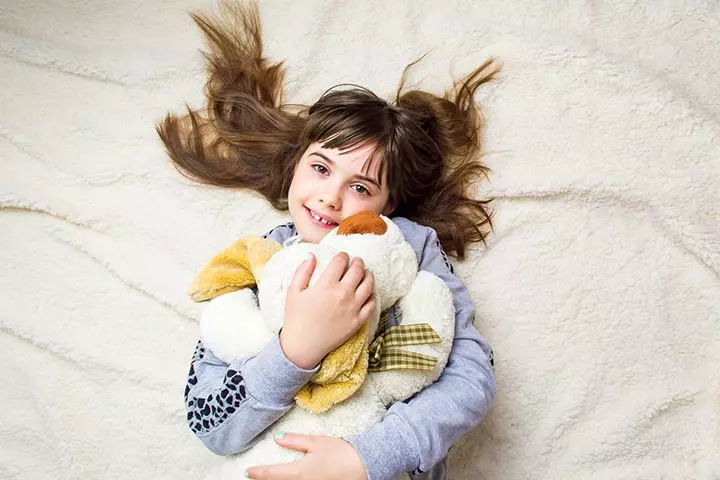
In this mindfulness activity, children will use a soft toy as a breathing companion, which will engage them and also help them understand how breathing can affect the vibrations in their body.
How to:
- Place a soft or a stuffed toy on the child’s stomach.
- Now ask the child to breathe normally and observe the movement of their breathing companion.
- Next, ask them to breathe heavily and observe how their companion moves.
- Repeat the same while breathing slowly.
- They will notice that their breathing companion falls when they breathe heavily and stays intact when they breathe normally or slowly.
- This activity can be used to teach kids about the importance of maintaining a balanced mindset in all situations in life.
5. Sense of smell

This is a simple yet powerful activity to train kids on exercising their sense of smell and how it can have an impact on improving their mindfulness. Soothing aromas can sometimes relieve anxiety and stress too.
How to:
- Place various objects with distinct smells in front of the child.
- Ask them to pick each item, smell it, and then describe it.
- When they smell, ask them to close their eyes and focus all their attention on the smell alone.
- Choose objects with appealing fragrances so that at the end of the activity, they experience a feeling of freshness.
6. Read your heartbeat

This is a regular jumping exercise but with a twist – you have to read your heartbeat when you do.
How to:
- Ask the kids to stand still and observe their heartbeat.
- Now make them jump continuously for a minute or so, without any interruption.
- Ask them to pay attention to their heartbeat now.
- At the end of this fun activity, ask them to record their observations.
7. Positive mission statement
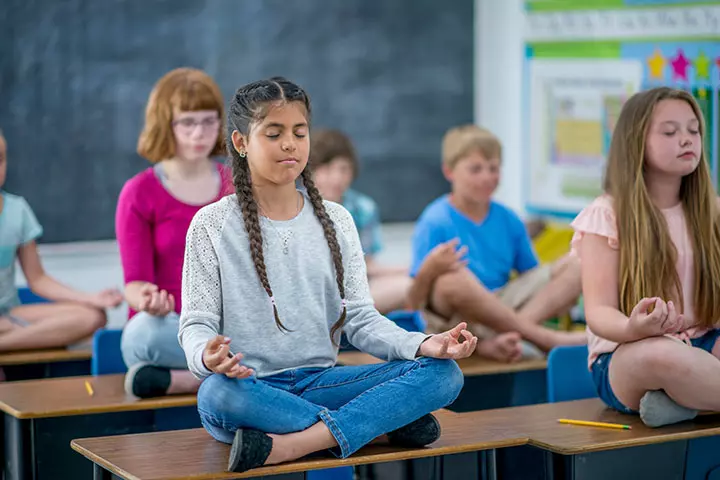
Use this activity to reinforce a positive attitude and motivation, which can play a critical role in improving mindfulness.
How to:
- Ask the children to sit in a relaxed position, with a calm mind.
- Ask them to take a couple of deep breaths, close their eyes, and think about their lives and what inspires them.
- Next, give them 15 minutes to come up with a positive slogan or mission for their lives, such as caring for stray animals and practicing sharing.
- This positive mission statement can be practiced by them regularly to reinforce the zeal and confidence in their everyday lives.
8. Embrace every feeling
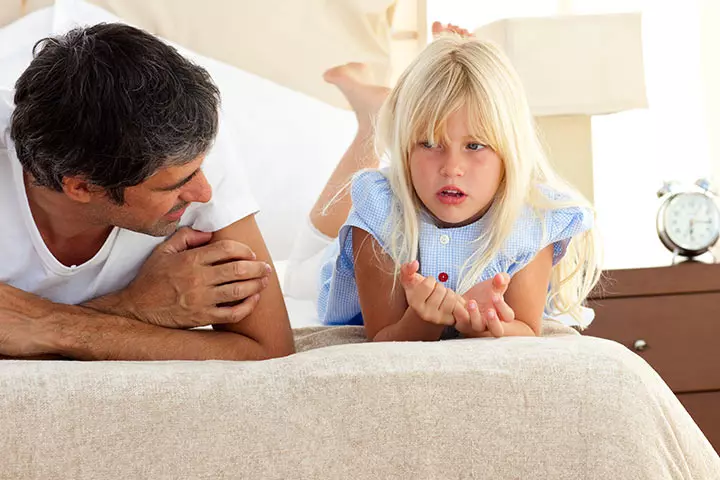
Feelings are just feelings, and they are temporary. It is essential for children to learn that there is no good feeling or bad feeling, and this activity helps them with that.
How to:
- Ask the child to think about two past experiences: a happy one and a sad one.
- Now ask them to describe both the instances in detail. Additionally, you can encourage them to try journaling and note down their feelings.
- When they are done with the explanation, ask how it feels in the present moment, and if those feelings matter to them in the current moment.
- When they talk about it, they will realize how liberating it is to let go of irrelevant thoughts about what happened in the past.
9. Create a mind jar

Although rare, just doing nothing and fidgeting around with things can sometimes help in relieving tense muscles. And if the things around are really nice and colorful, it is all the better.
How to:
- Take a clear jar with a tight lid to secure it properly.
- Help your child add hot water to the jar until it fills up to the 3/4th mark.
- Now, it’s time to have fun with glitter. You can stick to one color or go crazy with as many as you want.
- Let it sit for some time and secure the lid with hot glue so that it won’t spill over later.
- That’s it! Your very own mind jar is ready! Shake the jar and see the colorful glitter dance for you.
You may use this mind jar, every time you feel stuck with thoughts or even when you are stressed.
Tip: A parent or guardian must supervise children during this activity. Parents are advised to be very careful while using hot water or hot glue so that children do not harm themselves.
10. Body scan
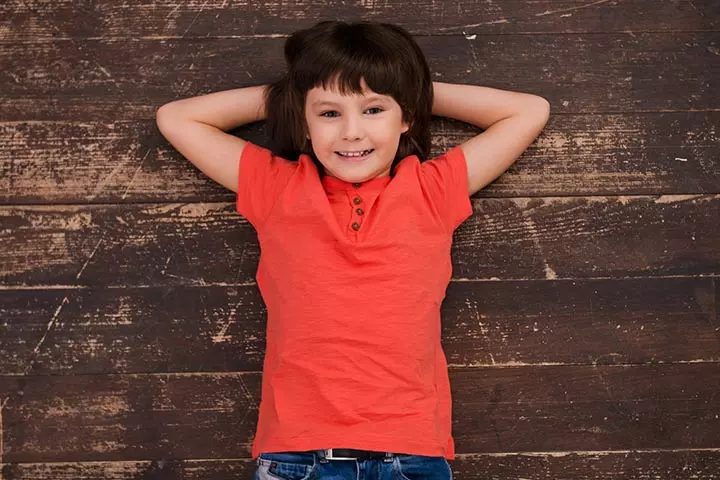
This is a simple but thoroughly relaxing activity that helps in developing a mindful and attentive personality. The ideal time for this activity is before your child’s bedtime, as it can help them relax and sleep soundly.
How to:
- Make the child sit in a relaxed position.
- Ask them to take a couple of deep breaths.
- Now ask them to lie down comfortably and close their eyes.
- Ask them to focus on each part of the body, from head to toe. They must move their attention from the tip of their toe to the feet, then legs, and slowly upwards to the head.
- To end this activity, they must once again spend a few minutes running their attention throughout the body.
11. Visualization
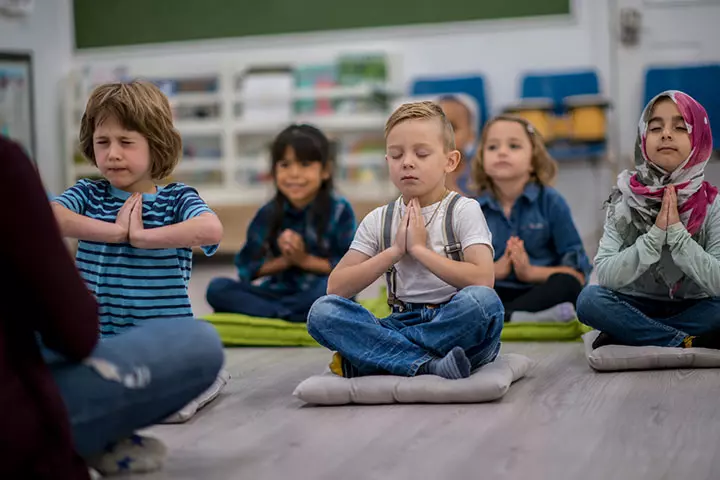
Guided imagery or visualization for kids is an engaging activity. The visualization you choose may vary from short and simple to quite deep.
How to:
- Choose a topic which suits the child or kids in one group, and something that will also address their concerns. For instance, you can pick a motivational topic before a test or competition.
- Ask children to sit in a relaxed and comfortable posture and close their eyes.
- Give them specific and clear instructions, right from the beginning of the visualization process to the end.
- To make the activity very soothing, you may also choose to play music such as nature sounds or calming rhythmic playlists.
12. Yoga
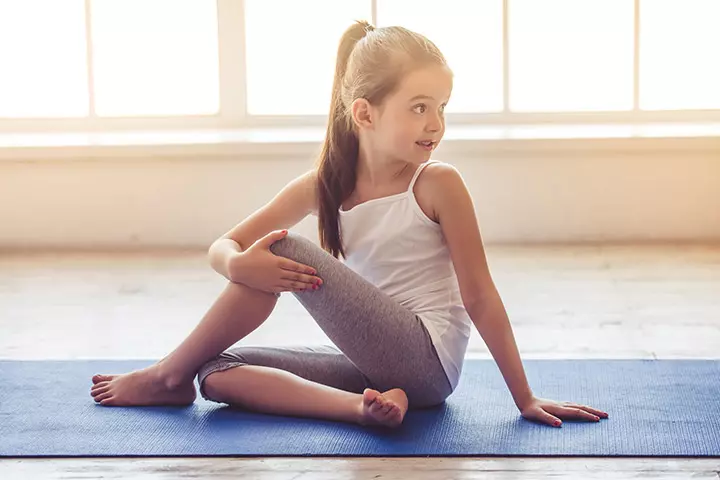
Yoga has enormous benefits, not just for the body but also for the mind. It helps in improving focus and concentration levels too.
How to:
- Start with basic yoga poses for kids while explaining to them the benefits.
- Yoga, introduced at an early age in life, helps a child in building self-esteem, physical and mental awareness.
 Quick fact
Quick fact13. Practice gratitude
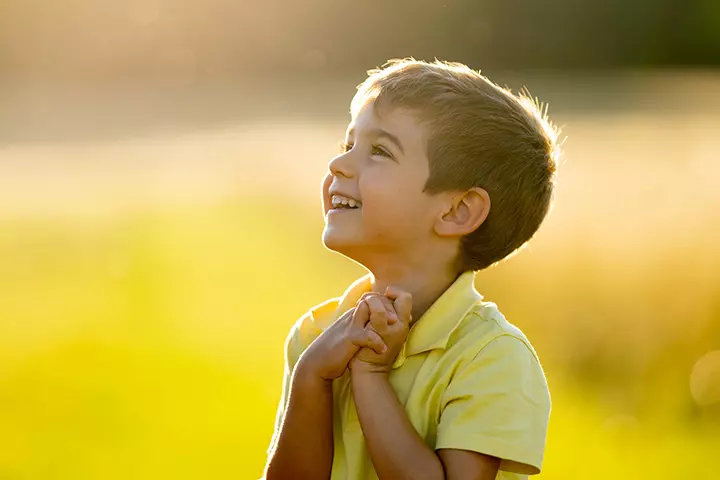
Being thankful and expressing gratitude plays a pivotal role in becoming a better human. For every little blessing or favor we receive from anyone, we must be grateful.
How to:
- Kids can practice gratitude by thanking their parents for providing them with food, shelter, and a good life.
- They may also express gratitude to their teachers, friends, and elders.
- They can express this aloud or write it down in a journal.
14. Create a bedtime ritual
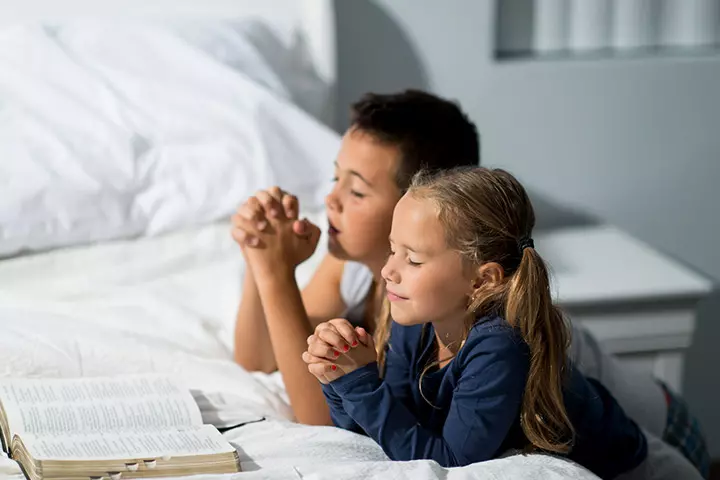
Having a bedtime ritual is simple yet fulfilling.
How to:
- Parents can help build a bedtime ritual for children. Start the evening with homework, followed by an early dinner, a bedtime story, and finally lights out.
- Before going to bed, they may also have a routine of praying or meditating to calm their mind.
15. Hand tracing
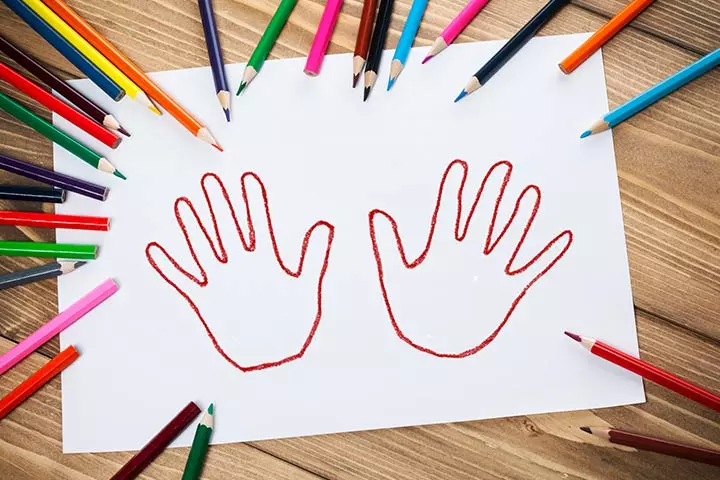
Who knew that an activity as simple as tracing your hand could also contribute to mindfulness?
How to:
- Ask the child to take a blank paper and place their non-writing hand on it first.
- Let them start tracing, using the other hand, on a sheet of paper. This would be the easy part.
- Now ask them to place their writing hand on the paper and trace it with the non-writing hand.
- Ask them how it feels? Not very easy, but that’s the trick, to challenge your mind to perform non-routine activities with ease. This will prove beneficial in training the mind in doing various activities with ease.
16. Stay calm and composed
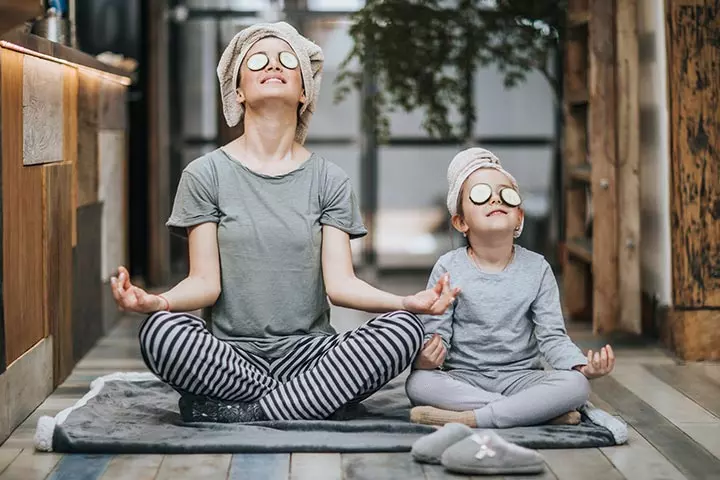
It is easier said than done! No matter how much one may try, it is quite natural for anyone to lose their mind when things are not going right. But with a little patience, you can slowly train your child to take little steps towards having a calm or balanced reaction to any unforeseen event or situation in life.
How to:
- Every time something irritates them, ask them to try something like drinking water, counting numbers, taking a deep breath, or going for a walk to calm or distract themselves.
- These small steps will bring a significant change if practiced consistently.
If these activities are too dry for the child, you can up the fun element a bit and try these mindfulness games next.
17. Balancing on a single foot
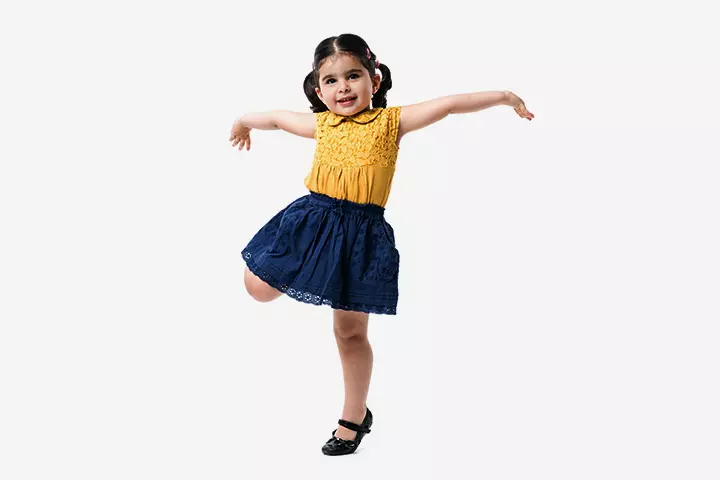
This is a challenging activity where the child has to balance the body on a single leg or foot.
How to:
- Ask the child to stand at ease.
- Now take a couple of long and deep breaths.
- They have to now slowly balance their body on one foot and lift the other leg.
- It may be quite challenging initially, but once they master it, kids are sure to enjoy this mindful game.
7 Best Mindfulness Games For Kids
Like the activities discussed above, mindfulness games for kids help in making the child more aware and alert about their bodies and mind. These games are fun and challenging as well, and prepare the kids for becoming more proactive and diligent.
18. Blind man
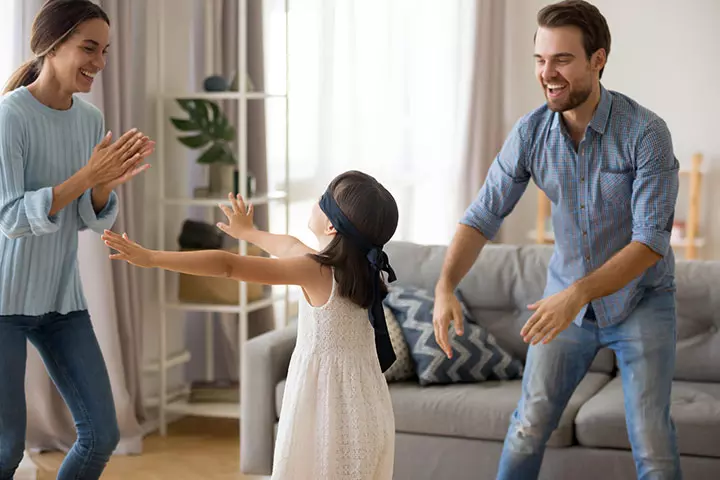
We all love playing the blindfold game, but do you know that it can offer plenty of mindfulness benefits too?
How to:
- Choose one kid to be a blind man and blindfold him/her.
- Now the blind man has to hear the sounds and observe the sensations around, to identify others who are playing together.
- The blind man has to catch as many people as possible.
- The challenge here is to win at the game when the most important sensory organ; your vision is not supporting you.
19. Balloons off the ground
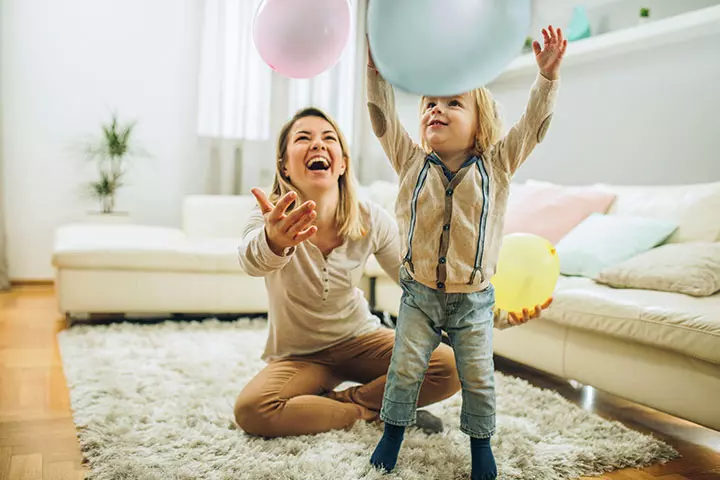
This is one such game which can be enjoyed by not just kids but elders, pets, and everyone else too. The game compels the participants to focus and improves mindfulness also.
How to:
- Get a few colorful balloons.
- Ask the kids to blow the balloon as big as they can, under the supervision of a parent.
- Now the challenge is to play with the balloon and keep it up in the air.
- They lose a point every time the balloon touches the ground.
20. What’s in the bag?
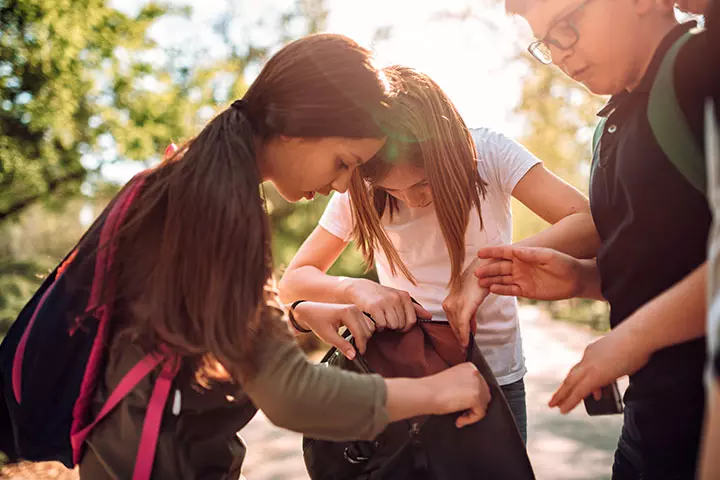
What’s in the bag is a fun game for young children; it can be used as an educational tool too.
How to:
- Place random items of various shapes, sizes, and textures in a bag.
- Ask the child to reach into the bag using just one hand and identify the item without looking at it. You may even blindfold them to make it more challenging and activate their sense of touch.
- The challenge in the mindfulness game lies in trying to name the objects correctly; the more, the better. Having a timer would make it more fun.
21. Blindfolded taste test
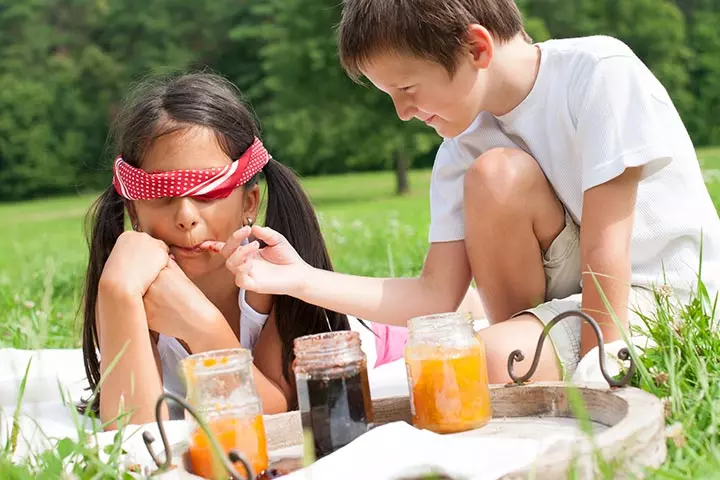
Awareness of each of the sensory organs also plays a crucial role in developing mindfulness in kids and adults. A blindfolded taste test is a game to activate or test your taste buds. Here’s how it’s done.
How to:
- Blindfold any one player.
- Place any ten random food items such as sauces, cookies, chocolate, juices, fruits, etc., on a table.
- Now the other players have to make the blindfolded player taste each food item.
- The blindfolded player has to guess the name of each item.
- The player who identifies the most number of food items wins the game.
Tip:
Do not include any allergens or food items such as nuts, dairy, gluten, etc., that children could be allergic to.
22. Playing Jenga
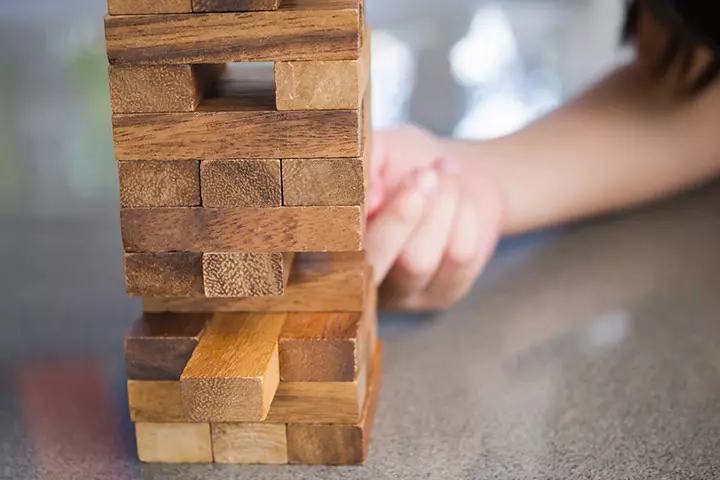
Jenga helps in improving the child’s fine motor abilities, critical thinking, attentiveness. In addition to all of this, this game is a lot of fun.
How to:
- To play this, you will need the Jenga game blocks and a flat, sturdy surface.
- Now in sets of three, start building your Jenga tower. Each new layer must be adjacently placed with the previous layer’s thin ends.
- Once all the 54 blocks are stacked, the challenge begins.
- Choose an order to rotate the sequence of players.
- The players have to carefully and diligently remove a block from anywhere without causing the tower to fall. The block removed shall be replaced on the top.
- Keep repeating this, either until the tower is knocked off or till an entire set is finished. Sounds simple, right? Wait until kids try playing Jenga.
23. Pennies game
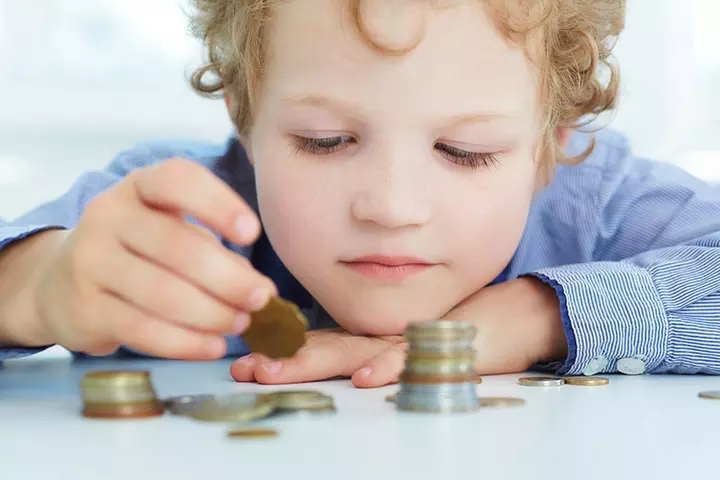
This is another exciting mindfulness game that is sure to get the children excited. This game requires more than two players.
How to:
- Hand over a penny to each child and ask them to analyze it thoroughly.
- Once they finish studying the pennies, it’s time to place them back in a bag.
- Mix all the pennies.
- After a couple of minutes, they have to look for their penny.
- If they can identify their penny correctly, they win the challenge.
24. Simon says
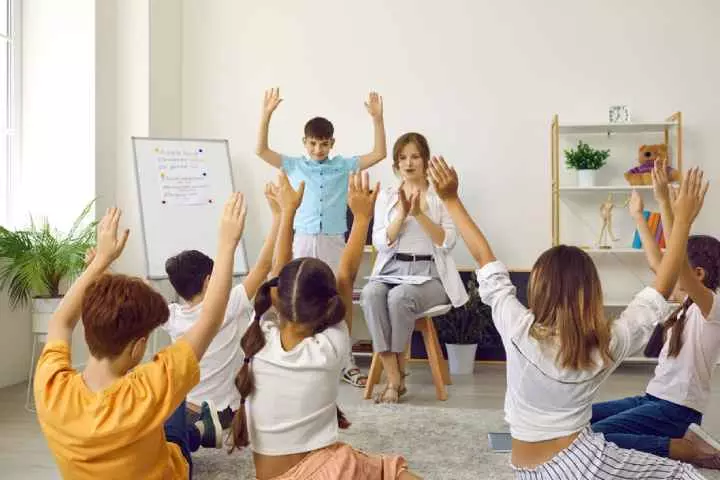
Simon Says is a classic, engaging game that tests players’ attention and reaction skills. It’s simple to play and great for all ages, especially children.
How to:
- One player takes the role of ‘Simon’ and stands in front of the group.
- Simon gives commands to the other players, such as ‘Simon says touch your nose’ or ‘Simon says jump.’
- Players must only follow the command if it starts with ‘Simon says.’
- If Simon gives a command without saying ‘Simon says’ first, players should not follow it.
- Anyone who follows a command without ‘Simon says’ or fails to follow a ‘Simon says’ command is out.
- The last player remaining, who correctly follows all of Simon’s commands, wins.
- Rotate Simon’s role to give everyone a chance to lead.
Frequently Asked Questions
1. At what age can you teach mindfulness?
There is no specific age by which you can introduce children to mindfulness. The right time is when your child can understand the practice’s significance and is able to implement the instructions.
2. Does mindfulness help ADHD?
Yes. According to a study, mindfulness helps manage stress in people with ADHD. It helps them stay calm, focus better, and cope with distractions (2).
3. What are mindful games?
Interactive games that encourage mindfulness, self-awareness, and present-moment awareness are known as mindful games. They provide an exciting and fun way to develop mindfulness and improve general well-being. These activities entail concentration, deep breathing exercises, and fostering a nonjudgmental mindset toward ideas and emotions. These games are appropriate for players of all ages and can be played independently or in groups.
4. How can mindfulness activities and games be incorporated into a classroom setting?
There are several ways to introduce mindfulness activities and games in the classroom; these include encouraging students to practice mindful breathing, incorporating listening activities, and guiding students to integrate conservative movement breaks like simple stretching exercises and yoga poses to tune their bodies and sensations. Additionally, they can allocate time to foster a spirit of gratitude and positive vibes and teach students to develop a compassionate mindset.
5. Are there any potential risks or drawbacks to practicing mindfulness with kids?
Mindfulness activities may sometimes bring up strong emotions in children. As a result, some children may find it challenging to stay still or focus, while others may struggle to process certain emotions that arise during such activities. Mindfulness practices may also trigger difficult memories for children who experienced trauma. Lastly, being mindful of cultural sensitivity and respecting diverse beliefs and practices is essential.
Mindfulness can help your child come in contact with their innermost thoughts and feelings. And, awareness about our body and mind, helps in thinking and communicating accurately. There are various ways in which children can practice mindfulness, but what works best for your little one can be understood by exploring and customizing as per their needs. Incorporating mindfulness activities into children’s daily routines can significantly impact their emotional well-being, leading to happier and healthier lives.
Please tell us in the comment section below, about your experiences if your child practices mindfulness. Have these mindfulness activities helped your child too?
Infographic: Mindfulness Activities To Teach Your Children
Mindfulness helps develop self-control and lowers stress and anxiety levels. The infographic lists some enjoyable activities that can help teach mindfulness to children. These activities can help the child manage stress and stay calm during tough moments.
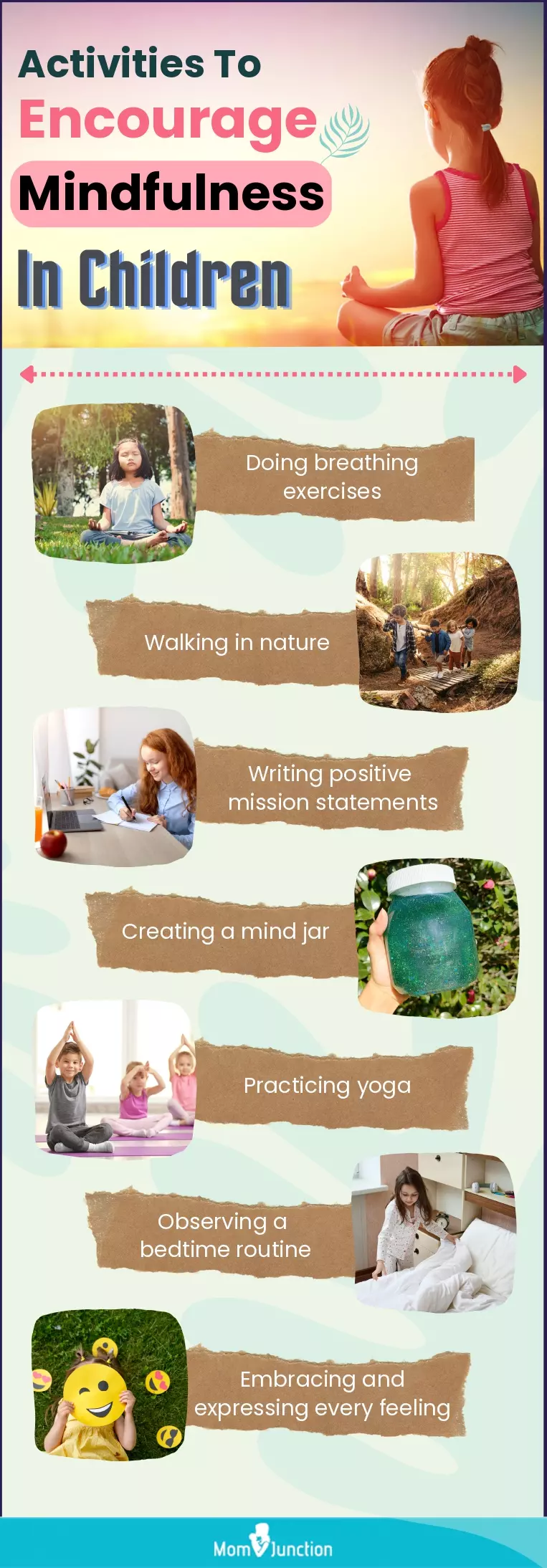
Illustration: Momjunction Design Team
Illustration: Fun Mindfulness Activities And Games For Kids
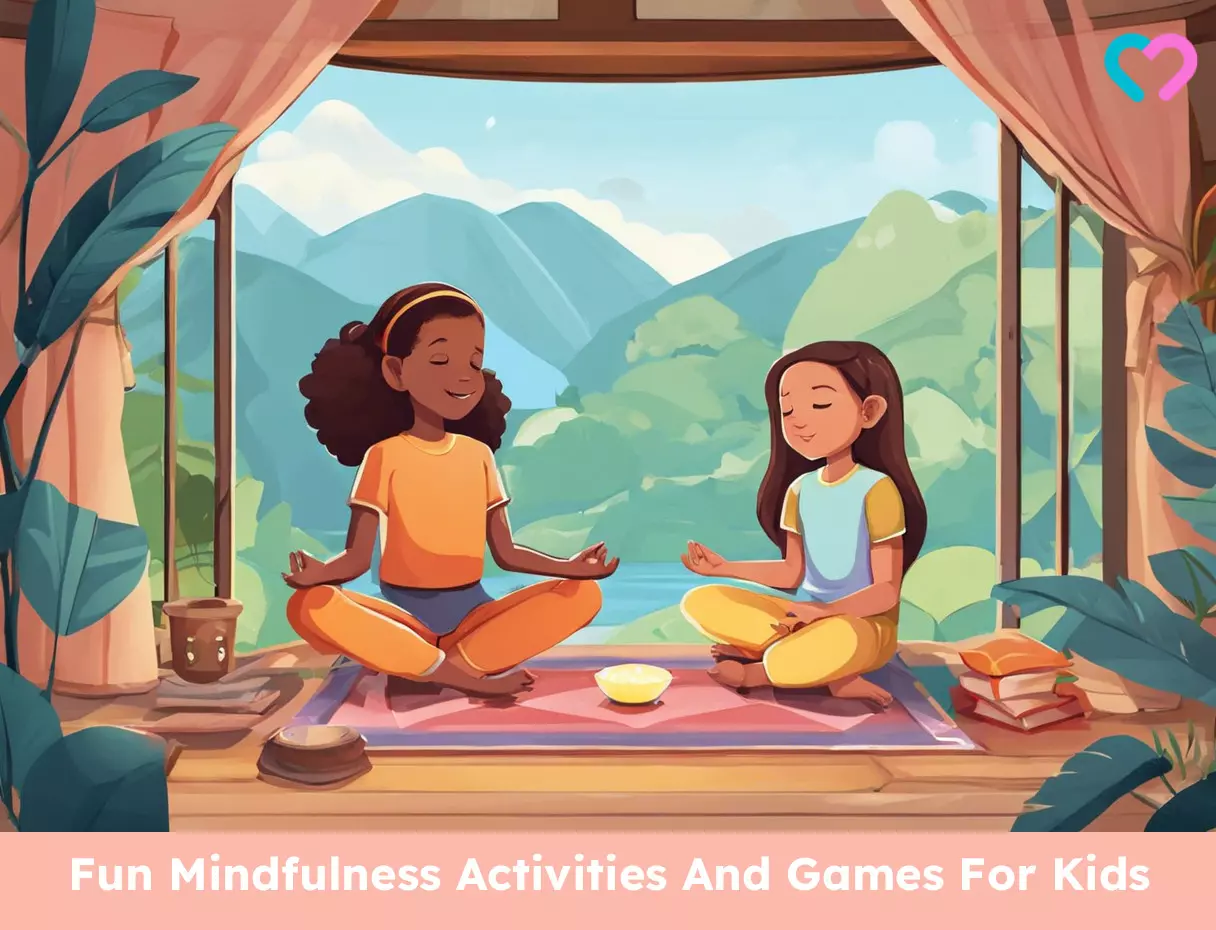
Image: Stable Diffusion/MomJunction Design Team
10 fun mindfulness activities to help your children relax and focus.
Personal Experience: Source
MomJunction articles include first-hand experiences to provide you with better insights through real-life narratives. Here are the sources of personal accounts referenced in this article.
i. 6 easy mindfulness activities for kids;https://caitlinhouston.medium.com/change-text-alignment-15702a18a75e
References
- Jill Suttie; Five Ways Mindfulness Meditation Is Good for Your Health (2018)
https://greatergood.berkeley.edu/article/item/five_ways_mindfulness_meditation_is_good_for_your_health - John T. Mitchell; et al.; (2015); Mindfulness Meditation Training for Attention-Deficit/Hyperactivity Disorder in Adulthood: Current Empirical Support, Treatment Overview, and Future Directions.
https://www.ncbi.nlm.nih.gov/pmc/articles/PMC4403871/ - Van Hagen I and Nayar US; (2014); Yoga for Children and Young People’s Mental Health and Well-Being: Research Review and Reflections on the Mental Health Potentials of Yoga
https://www.ncbi.nlm.nih.gov/pmc/articles/PMC3980104/
Community Experiences
Join the conversation and become a part of our nurturing community! Share your stories, experiences, and insights to connect with fellow parents.
Read full bio of Sri Yogi Anand
Read full bio of Harshita Makvana
Read full bio of Deepa Thomas
Read full bio of Nisha Bharatan












